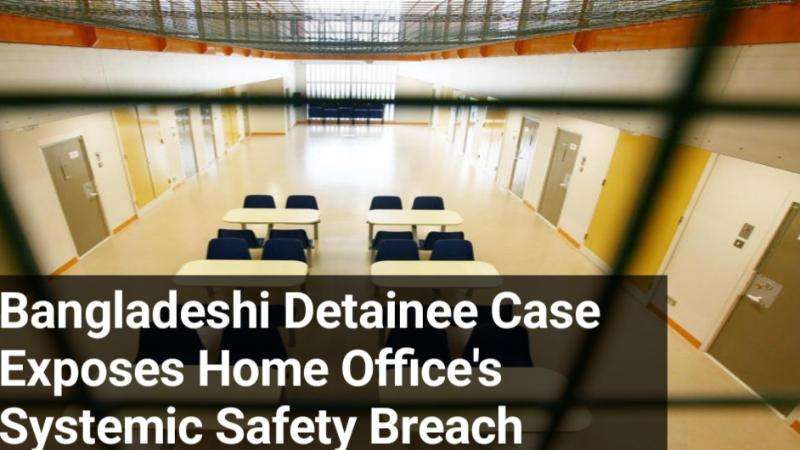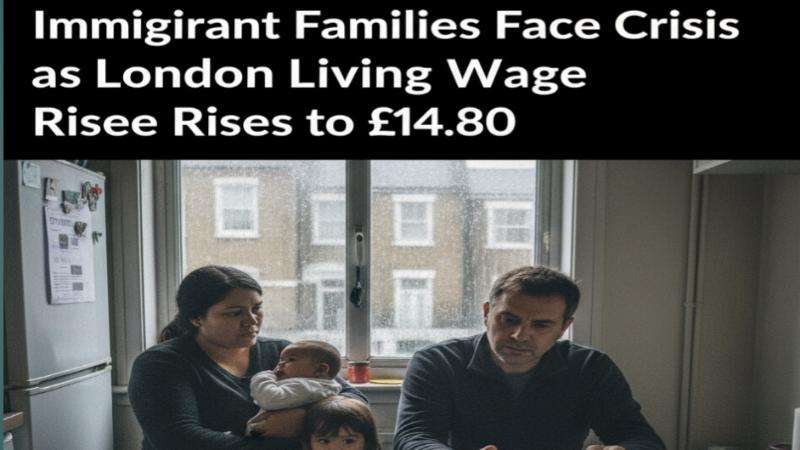More than 150,000 low-paid Londoners are set for a much-needed pay boost after the voluntary London Living Wage (LLW) was increased to £14.80 an hour, an uplift of 95p or 6.9 per cent on the previous rate. While hailed as a victory for workers, the increase prompts sharp debate over whether it goes far enough to shield vulnerable groups, particularly newly arrived Bangladeshi, Indian, Pakistani, and wider South Asian and BAME immigrant communities, from the capital’s escalating cost of living crisis, Daily Dazzling Dawn understands.
The new LLW rate, which is voluntary but paid by approximately 4,000 firms in the capital including half of the FTSE 100 companies, is designed to ensure all staff aged 18 or older earn a basic minimum that keeps pace with actual living costs. This is significantly higher than the statutory National Living Wage (NLW), which currently stands at £12.21 an hour for over-21s. A full-time worker on the new LLW rate will earn £5,050 more a year than the legal minimum.
Inflation and the Reality of Life in London-The announcement comes on the same day the Office for National Statistics confirmed the UK’s rate of inflation remains stubbornly high at 3.8 per cent for the third successive month. However, for low-income families, the cost of essentials is rising much faster. According to the Resolution Foundation, the latest data shows that food prices are up 4.8 per cent year-on-year, while water bills have surged by 26 per cent, gas by 13 per cent, and council tax by 5.1 per cent—a disproportionate burden on those with the tightest budgets.
For the capital’s newly arrived immigrants from South Asia and BAME backgrounds, often concentrated in key low-wage sectors and facing cultural and language barriers, the financial strain is intensified. These groups frequently face higher barriers to securing affordable housing, leading to them shouldering disproportionate rent burdens which form the primary differential pushing the LLW higher than the rate for the rest of the UK (£13.45).
Recent research by the Living Wage Foundation tragically highlighted the widespread poverty, finding that 42 per cent of low-paid workers have been forced to use foodbanks in the past year, rising to 56 per cent of those caring for children. These figures are understood to be even higher within specific ethnic minority communities in London, who often rely on remittances and send money back home, putting further pressure on limited earnings.
Mayor and Unions React-London Mayor Sir Sadiq Khan praised the increase, stating, “This almost seven per cent increase in the London Living Wage will make a huge difference to more than 150,000 hard-working Londoners. Since I’ve been mayor there’s been a seven-fold increase in employers paying the London Living Wage.”
However, the Living Wage Foundation confirms that more than 500,000 Londoners still earn less than the new voluntary rate, underscoring the scale of in-work poverty.
Unions were quick to point out major employers still falling short. Unison General Secretary Christina McAnea noted that the current minimum rate in the NHS in England is £12.51, substantially below both the old and new living wage rates. "That risks the health service losing many of those on the lowest pay bands, such as porters and cleaners, to supermarkets and others willing to match the hourly rate," she warned, calling on the Government to ditch the "discredited NHS pay review body system."
Despite economic challenges, the number of accredited Living Wage employers continues to grow, with over 16,000 firms nationwide now committed to paying the real Living Wage. Transport for London, Ikea, Uniqlo, West Ham FC, and the London Fire Brigade are among those currently paying the LLW. The increase sets a clear benchmark for the pay needed to live with basic stability in one of the world's most expensive cities.








.svg)

_2.jpg)
_1.jpg)